Vinux is an open source and completely free operating system derived from the world’s most popular distribution of Linux, Ubuntu, built around the Unity desktop environment and tailored for blind and visually impaired people.
Available for download as Live CD/DVDs
The Vinux project is available for download as two Live CD ISO images, as well as two Live DVD ISO images, designed to support both 32-bit (i386) and 64-bit (x86_64) hardware platforms.
Boot options
Being based on Ubuntu, both the Live CD and Live DVD versions come with the same boot screen the one used on the main Ubuntu OS, designed to allow the user to choose a language from the get-go.
From the boot screen, it is possible to try the operating system without installing it, start the installer directly, check the disk for defects, run a memory test, as well as to boot an existing OS from the first drive.
Unity is used as the main graphical desktop environment
While Unity is used as the main graphical desktop environment on Vinux, it uses the Orca screen reader and magnifier tool as the main accessibility software for blind and visually impaired users.
Default applications
Default applications include the Audacious audio player, Brasero CD/DVD burning software, Mozilla Firefox web browser, Gedit text editor, Pidgin multi-protocol instant messenger, Transmission torrent downloader, Mozilla Thunderbird email and news reader, Simple Scan image scanner software, Mangler VoIP client and Deja Dup backup tool.
Bottom line
In conclusion, Vinux is a really great project that will try to help blind and visually impaired users to manage their way through a quite perfect clone of the Ubuntu Linux operating system.
Keep in mind though, that is uses the Unity desktop environment, which requires a modern computer. Also, in order to use the operating system, you must first burn it onto CD or DVD discs, as well as to write it on USB flash drives, and then boot it from the BIOS of a PC.
What is new in this release:
- Up to date accessibility infrastructure.
- Gnome-ORca 3.20 with updates available for 3.22
- AT-SPI 2.20 with updates available for 2.22
- Brltty 5.4
- Speech-dispatcher 0.8.5
- Liblouis 2.6.2
- Firefox 48 with updates available to 5.0.1
- Thunderbird 45.2 with updates available to 45.5
- Unity 7.2.4
- Gnome-shell 3.10.4
- Mate 1.8
- LibreOffice 4.2.8
- Espeak 1.48
- Evince 3.12.2
- Clam av 0.98.7 with updates available to 0.99
- Kernel 4.40 from Xenial
What is new in version 5.0:
- New re-designed Vinux boot logo.
- Up to date accessibility infrastructure.
- Current Gnome-Orca and accessibility framework.
- Improvements with Nautilus file manager when processing large folders.
What is new in version 4.0:
- This is the first Vinux release featuring the Unity-2d Desktop which improves on transition to Vinux and introduces newer and increasingly stable accessibility features.
- Some of the highlights in Vinux 4.0:
- Brand new build process: Vinux now uses the same method to produce our
- images as Cannonical produces Ubuntu.
- Console speech just works. Much time and work has taken place to meet our blueprint goal https://blueprints.launchpad.net/vinux/+spec/vinux-4-functional-console-screen-reader
- Voxin is easy to set-up. Vinux has taken one step further in making
- Voxin easier to install.
- Quantal kernel: We are using a newer 3.5 kernel back ported to Precise offering better hardware support than ever.
- Classic menu. Vinux now has a Classic menu indicator which provides the old style menu whilst in a Unity environment.
- Vinux wiki. Our community is highly committed to providing clear and easy to follow documentation. http://wiki.vinuxproject.org/
- Vinux easy install scripts converted to meta packages.
- Pico voices. We are shipping with the Pico voices once again.
- Fixes:
- Images now work on optical and USB media instead of separate builds in the past.
- Weather indicator fixed, previously stopped working due to API changes.
- Gnome login sound fixed, Ubuntu set to be disabled by default.
- Fresh and clean sound theme added.
- PC speaker beep removed from blacklist, console users can again use it.
- Console branding. Vinux will identify itself at a virtual terminal and upon login offer tips of the day.
- Flite and Pico now available as separate packages.
- Cicero moved to a separate package also, will stop loss of speech from the curious.
- Revised keyboard shortcuts.
- Software:
- unity-2d 5.14
- LibreOffice 3.5.7
- Speech-dispatcher 0.8
- Gnome-orca 3.4.2
- Espeak 1.47
- Firefox 21.0
- Thunderbird 17.0
- Cry for help, remote assistance by Vinux gurus.
What is new in version 3.0.2:
- Kernel 2.6.32.39.
- Orca XDesktop 3.1.19.
- Firefox 10.0.2.
- Thunderbird 10.0.2.
- Minor package changes as well as Vinux specific console branding grub configuration.
- Vinux tips on console log in.
- Orca Customizations and man text scripts thanks to StormDragon.
- Easy install scripts optimized.
- Extra system sound schemes added.
- USB install script included.
- Luke's speakup DKMS package included, you no longer need to run restorespeech after a new kernel is installed. Speakup automatically builds at kernel install.
- Please be sure to leave Linux-headers-generic metapackage installed.
- CFH, openssh and CPU frequency daemon installed by default.
- Remastersys no longer deletes ssh keyss for remastering.
- YASR is no longer included, encountered frequent errors and not used.
- Removed ISO master and GTK record my desktop to insure the CD image is under 700 MB.
- Vinux 3.0.2 manages extra sources with apt-add-repository, /etc/apt/sources.list.d contains stable Mozilla, vinux and more package archives.
- The default desktop is Classic GNOME 2.x as you have come to expect from Vinux LTS releases.
What is new in version 3.2.1:
- The main difference between this and the recently released Vinux 3.2 is that by default it boots with Pulseaudio running in 'user' mode rather than 'system' mode.
- This prevents pulseaudio from crashing at boot on a small number of sound cards, but it means that speakup is not available from the live CD or immediately after installation. However there are now two simple commands for switching Pulseaudio from user to system mode in conjunction with a reboot of the machine.
- This version also includes an accessible zenity front end for Unetbootin which allows users to install Vinux to a USB pendrive with persistent storage. Users who have already installed Vinux 3.2 can upgrade to this version quite easily without having to reinstall.
- There are two new applications included in 3.2.1, usbinstall and cdburn. These are accessible scripts for installing Vinux to a USB pendrive and burning a CD/DVD and checking the md5sum of the burnt CD/DVD. They are still prototype scripts with no error checking so I have not included them in the menus yet, they must be launched by pressing alt+f2 and then typing usbinstall or cdburn - then pressing enter.
What is new in version 3.2:
- I am happy to announce the release of Vinux 3.2 based on Ubuntu 11.04. this is a cutting edge release featuring the latest versions of Orca (3.1.2-xdesktop) and Speech-Dispatcher (0.8~2784+13~maverick1) from the daily build repos. This version is available as CD and DVD in both 32 and 64 bit editions. The DVD version provides the same software as the CD but with the addition of libreoffice and some non-free multimedia codecs etc. The default desktop is Classic Gnome 2.x but Unity is available from the GDM login screen if your video card supports 3D. This release includes the Pico TTS voices in addition to Espeak, the Epiphany Internet Browser and built-in keybindings to quickly organise multiple windows with x-tile. It also features some new packages including Orca-Teacher, Talking Clock and CDBurn. This version also plays a system bell when the isolinux boot screen appears allowing you to select different boot options including an experimental 'toram' mode. There is also a Vinux 3.2 PLUS edition which features lots of extra packages for partially sighted users:
- I have managed to fit more text tools on the CD edition including: sox gpm screen, splitvt, figlet, cmatrix, txt2html, html2text, pdf2svg, pstotext, units mc, trash-cli, vrms, dict, sc, htop, linuxinfo, w3m, elinks-lite, urlview, finch, axel, calcurse, tdl.
What is new in version 3.0:
- On behalf of the whole Vinux community I am happy to announce the 3rd release of
- Vinux - Linux for the Visually Impaired, based on Ubuntu 10.04 - Lucid Lynx. This
- version of Vinux provides three screen-readers, two full-screen magnifiers, dynamic
- font-size/colour-theme changing as well as support for USB Braille displays. Vinux is
- now available both as an installable live CD and as a .deb package which will
- automatically convert an existing installation of Ubuntu Lucid into an accessible
- Vinux system! In addition, we now have our own Vinux package repository (from which
- you can install our customised packages with apt-get/synaptic) and a dedicated Vinux
- IRC channel. In the very near future we will also be launching a Vinux Wiki and
- releasing special DVD, USB and Virtual Editions of Vinux 3.0!
What is new in version 2.1:
- I am happy to announce the release of Vinux 2.1 Leviathan! This is a monsterous hybrid of the Vinux CLI max edition, the standard GUI edition and a wide range of additional applications including Open Office 3.0, the Evolution mail client, the Inkscape vector graphics package, the Scribus desktop publishing tools, the Bluefish webpage editor, the Gambas 2 IDE as well as much more. Obviously not all of these extra tools are accessible to speech/braille users, but partially sighted users can access them with the screen magnifier. This is a very large ISO (1.7GB) so you will need a reasonably fast broadband connection to download it.
What is new in version 2.1:
- I am happy to announce the release of Vinux CLI 2.1 which is now available in three different versions: The "dna" version is a minimal Debian system which only has five additional applications installed: the speakup screenreader the remastersys installer, the wodim iso burning tool and the aptitude package manager. It weighs in at just under 200MB and is aimed at advanced users who want to build their own customised installation and/or distribution from scratch. The "std" version is a standard Vinux CLI system with a range of basic desktop applcations including the lynx internet browser, the nano text editor, the mutt e-mail client, the midnight commander file manager and the pdmenu application launcher. This is just under 400MB in size and is aimed at intermediate users who may want to customise the standard version by adding extra applications. The "max" version is a full CD"s worth on command line applications containing as many useful desktop tools and utiliies that I could find in the Debian repositories. This aimed at users who want a ready made CLI system with all the bells and whistles! Both the "std" and max" editions have the Vinux single character command aliases and a menu system which allows uers to browse and run installed applications. Entering "m" will open the menu, entering "h" will bring up a help file which lists all of the keyboard shortcuts and installed applications. These new versions were all built with the new Vinux build script which is included in the /root folder of each edition. You can use this to install pre-selected suites of applications or modify it to build your own customised system. This is also available as a seperate download if you want to modify an existing version of Debian.
What is new in version 2.0:
- The CLI edition comes in the form of an installable live CD which provides a console only version of Debian Lenny 5.03 with Speakup installed and enabled by default. This edition is aimed at intermediate and advanced users and perhaps beginners who want an easy introduction to the command line interface. It was inspired by GRML, but is aimed specifically at VI desktop users rather than sighted sysadmins. It comes with over a thousand packages installed covering all of the main categories: editors, browsers, mail clients, text-based games and lots of utilities etc. It also features over 60 single character command aliases for all of the most common commands.
What is new in version 2.0:
- Vinux is moving away from Ubuntu and will use Debian as the foundation of the next release. Here is an explanation of why: In short, Debian is the world's largest community developed Linux, with over 25,000 pre-built packages. Debian hackers have gotten Debian to do just about everything for everybody. It's perhaps the world's best operating system for true hackers. Many in the Debian community believe fiercely that all software should be free, including source code. There are far more Debian contributors than Ubuntu contributors.
- Ubuntu is based on Debian, like several other flavors of Linux, and Ubuntu benefits from all the innovation in Debian. Ubuntu takes Debian, and then changes it to be less of a hacker-optimized Linux, and more like an operating system for Windows users. It has better hardware support, partly because Ubuntu doesn't mind being friends with commercial software vendors who don't provide source code for free.
- Vinux can be built on Debian, Ubuntu, or other Linux systems. The advantage of Debian is that it has clean, clear, simple, and robust audio support for accessibility. This is partly because the Debian community releases "stable" versions of their code that works with very good performance. The advantage for Ubuntu is that by default it comes with things to make life simple for regular Windows users, like network-manager - a tool many hackers despise. It also tends to "just work" with hardware better than any other flavour of Linux. The disadvantage of Ubuntu is that it is laser-focused on competing with Windows, and in doing so, it pushes out technologies before they are really solid, like the Compiz window manager with 3D effects, which does not yet work well with Orca, and pulseaudio which is causing havoc right now.
- It is entirely natural for the blind community to prefer very stable software with good speech performance, where few problems are introduced when they do routine updates. It makes perfect sense to me to have Vinux based on Debian for these reasons. Once you get Debian running, you can expect it to run with few problems for years. On the other hand, the latest and greatest technologies are installed by default in Ubuntu's releases, so I find it better for debugging technologies coming down the road, like the Compiz window manager, pulseaudio, and whatever other new packages which will cause us grief in the future.
- So, oddly enough, it seems Debian is better for building robust Vinux for most blind users, while Ubuntu is better for software developers focused on improving future accessibility.
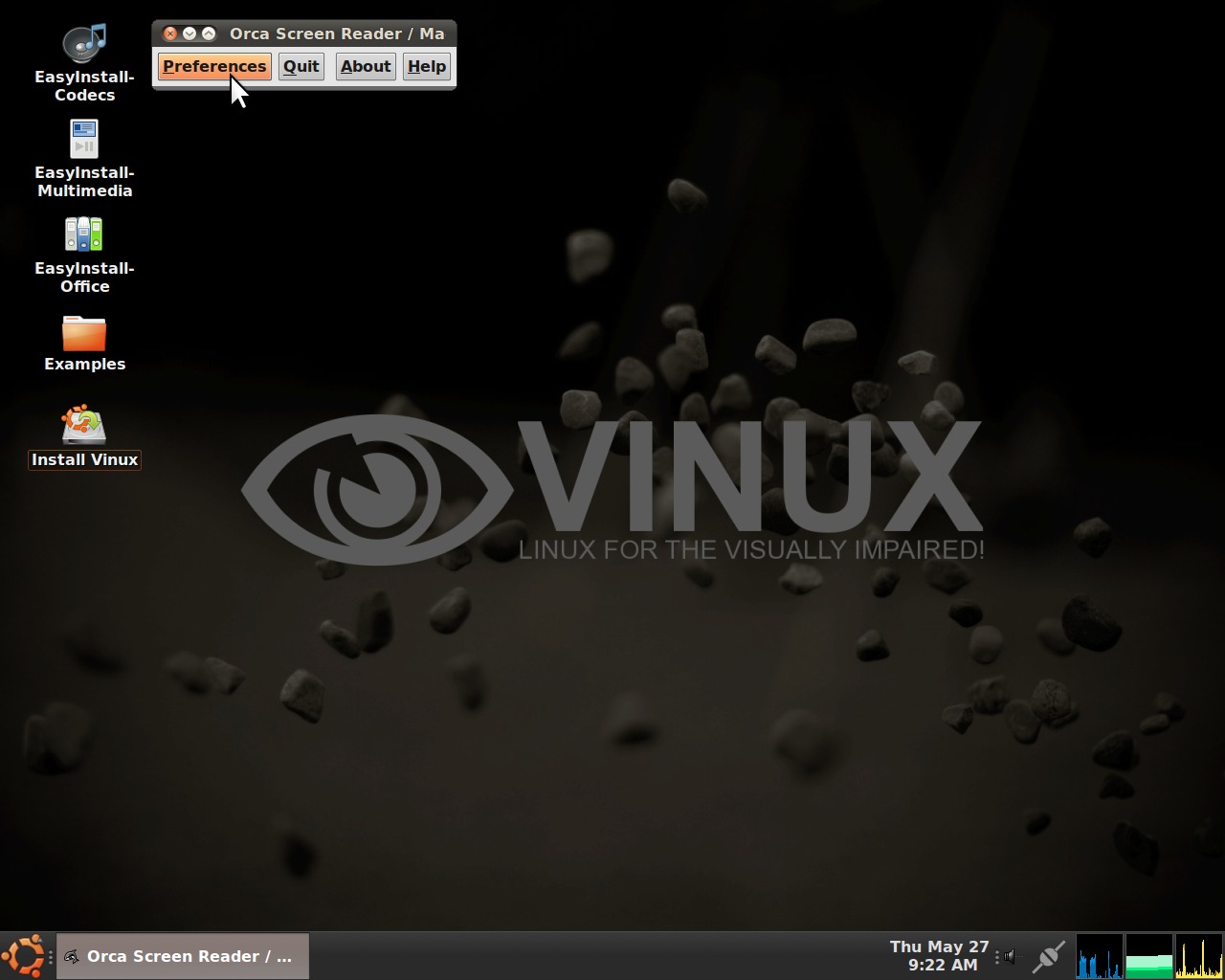
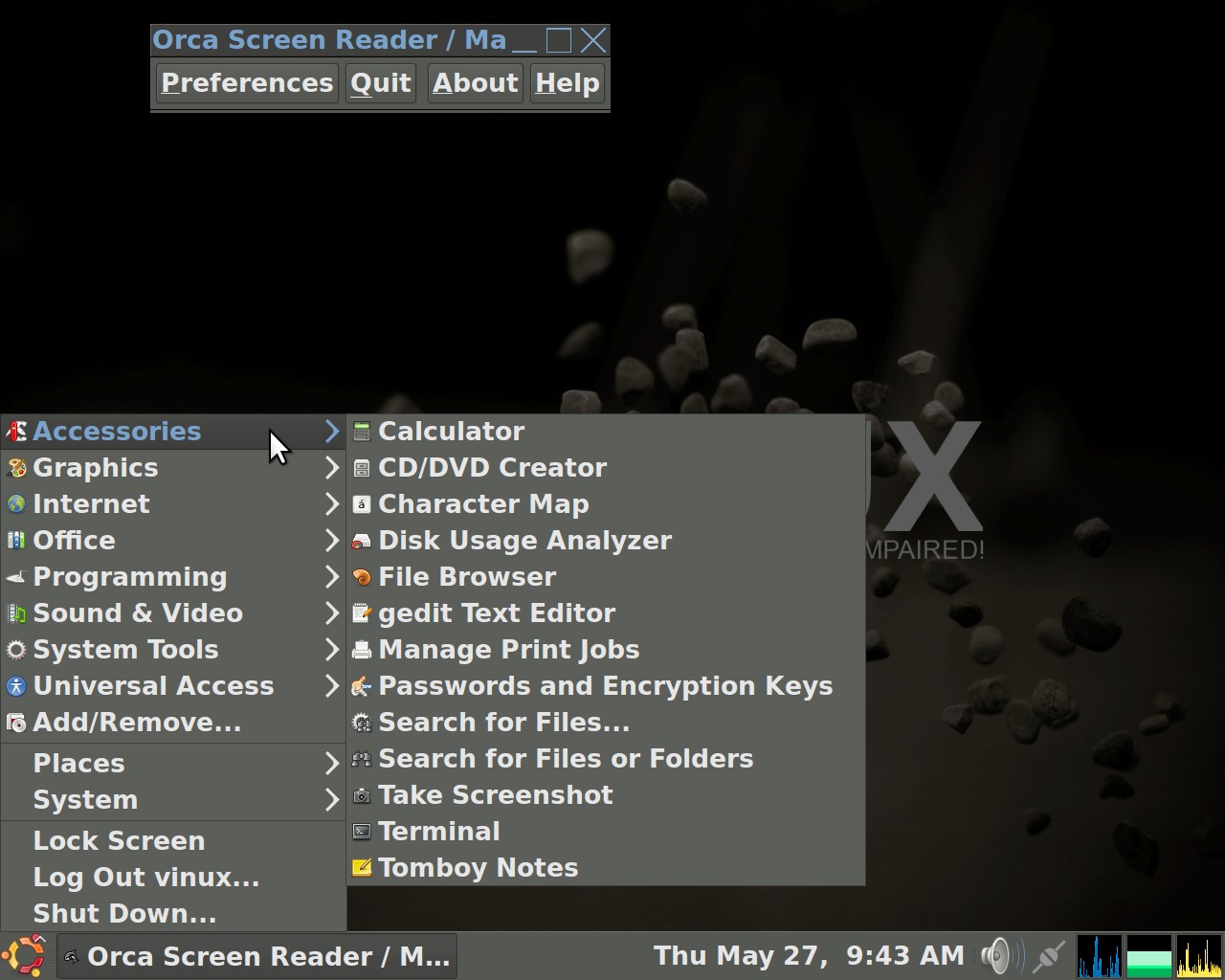
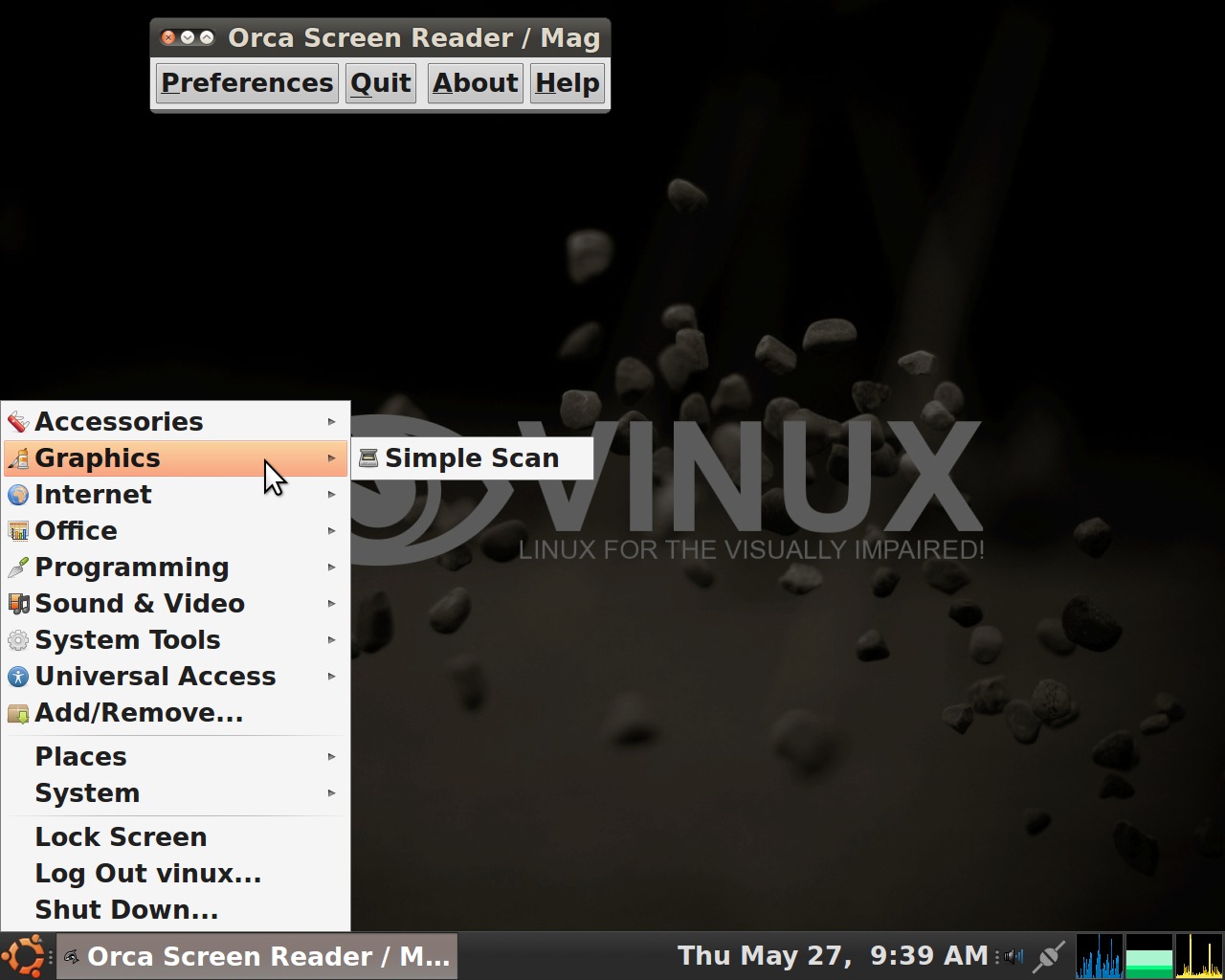
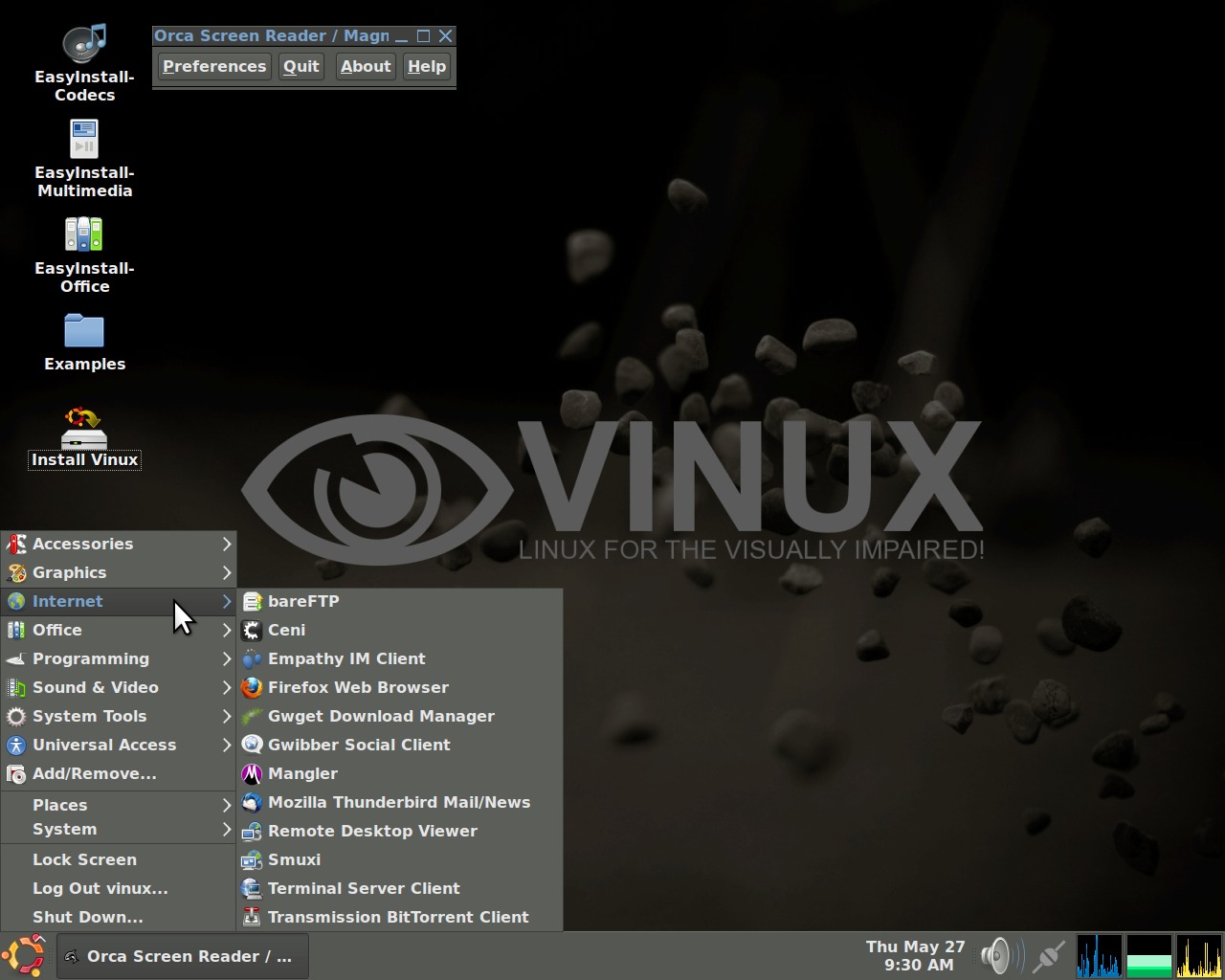
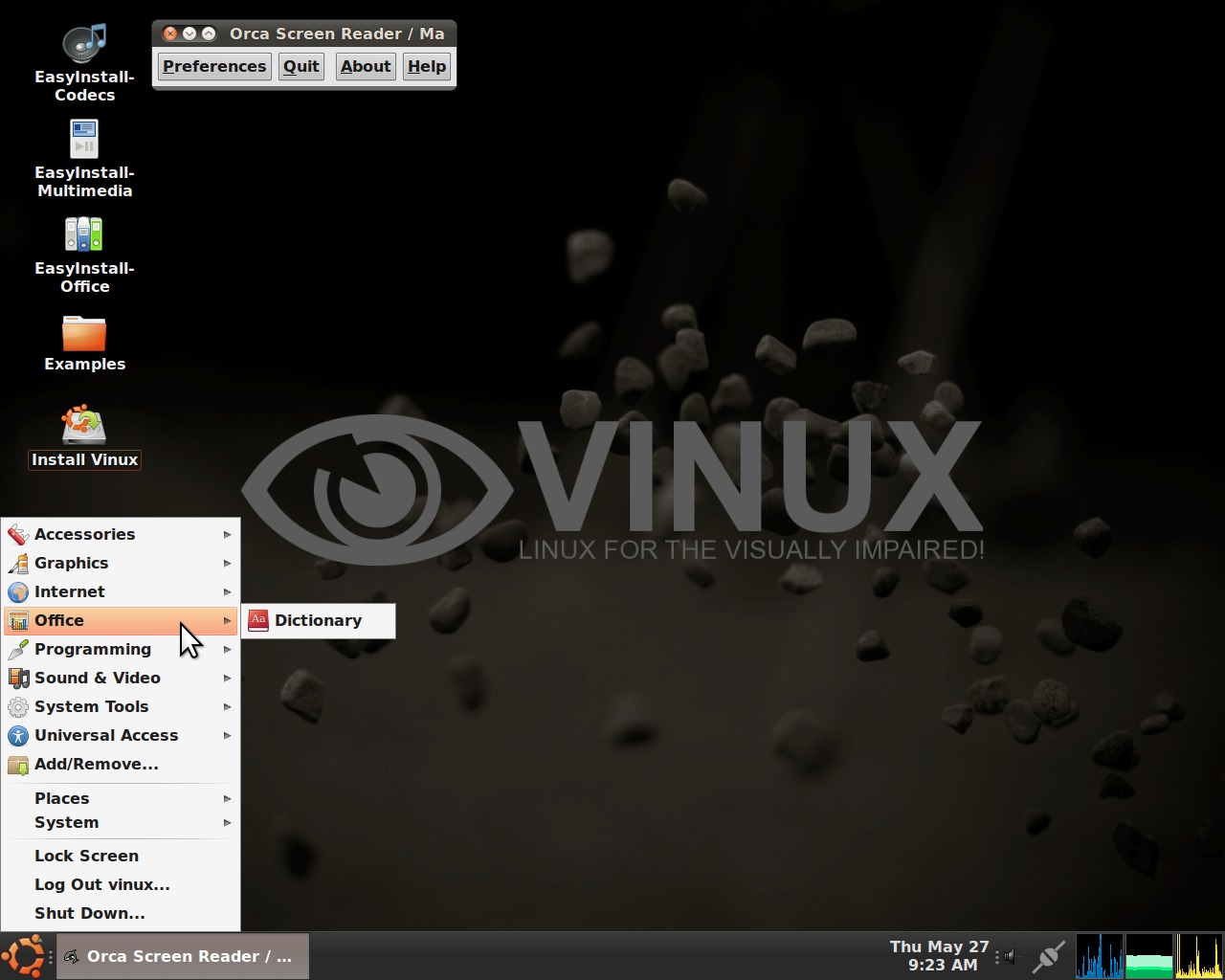
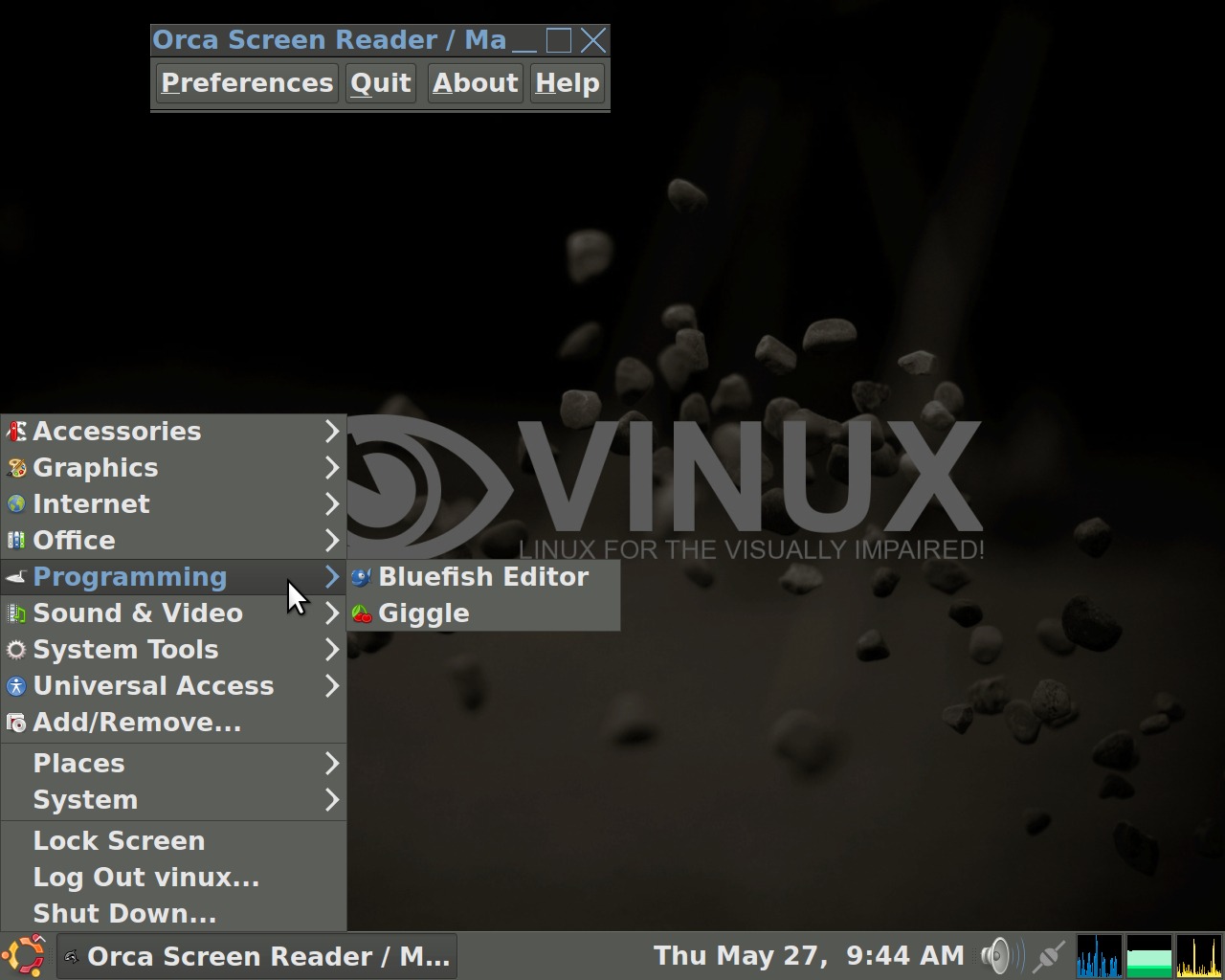
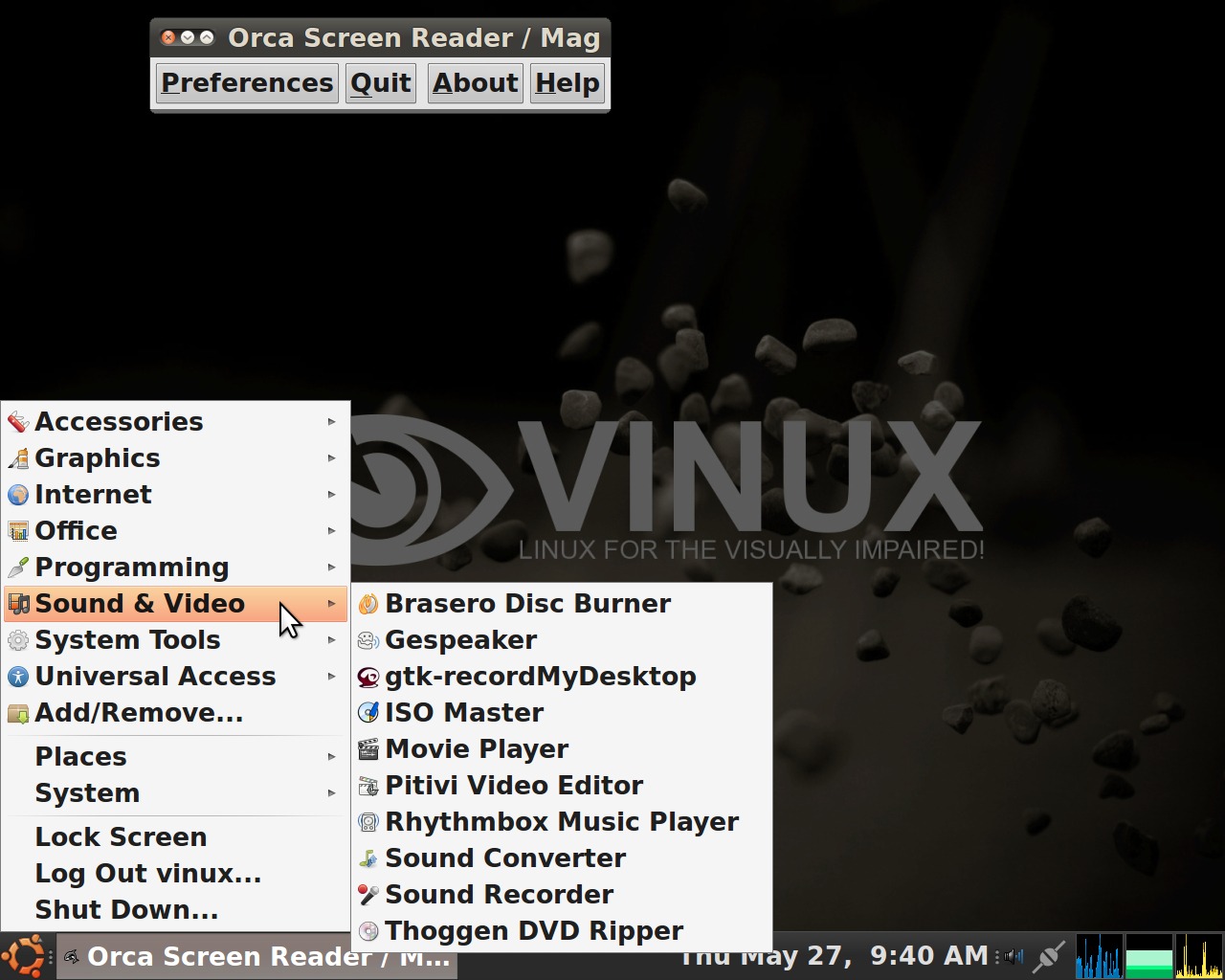
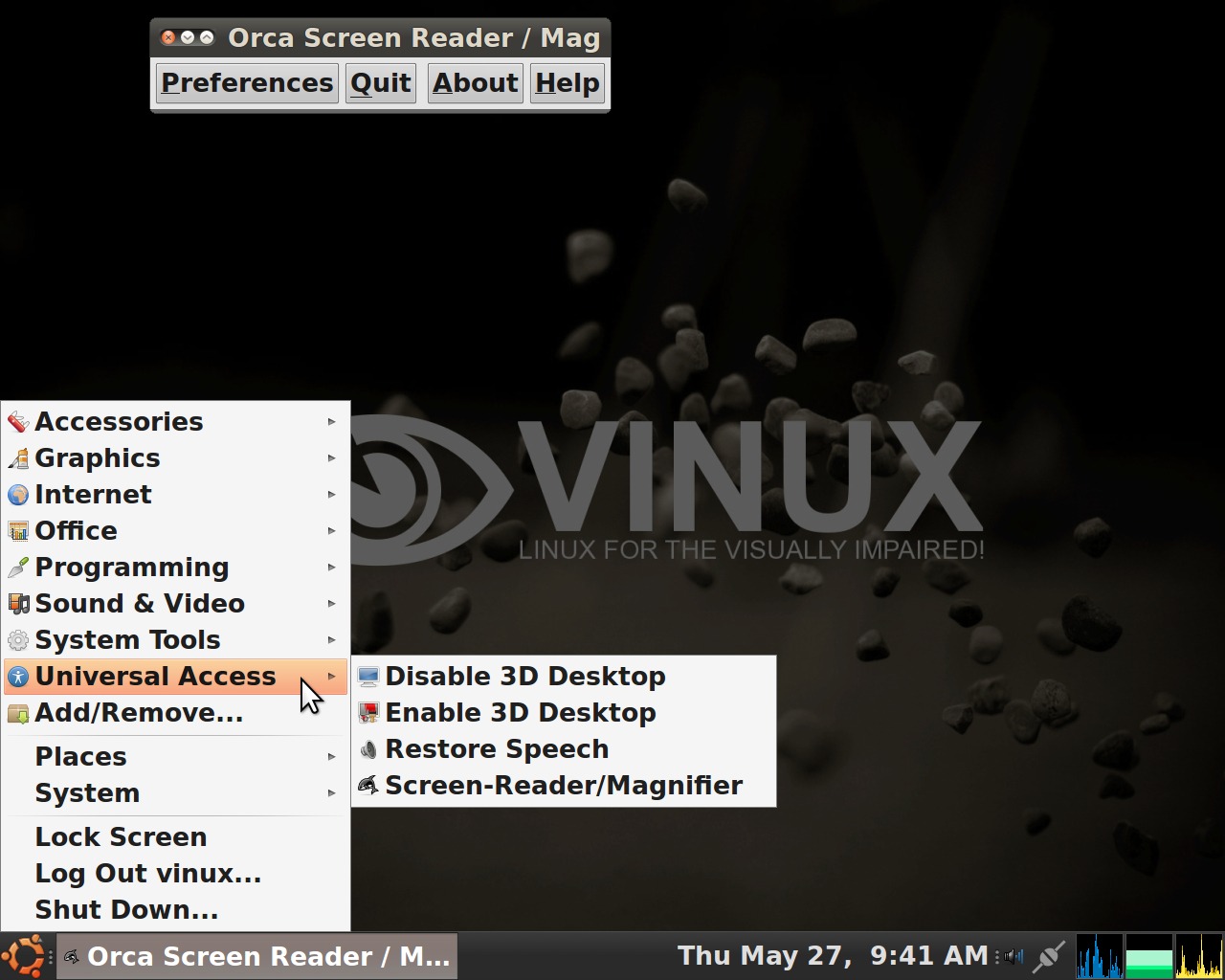
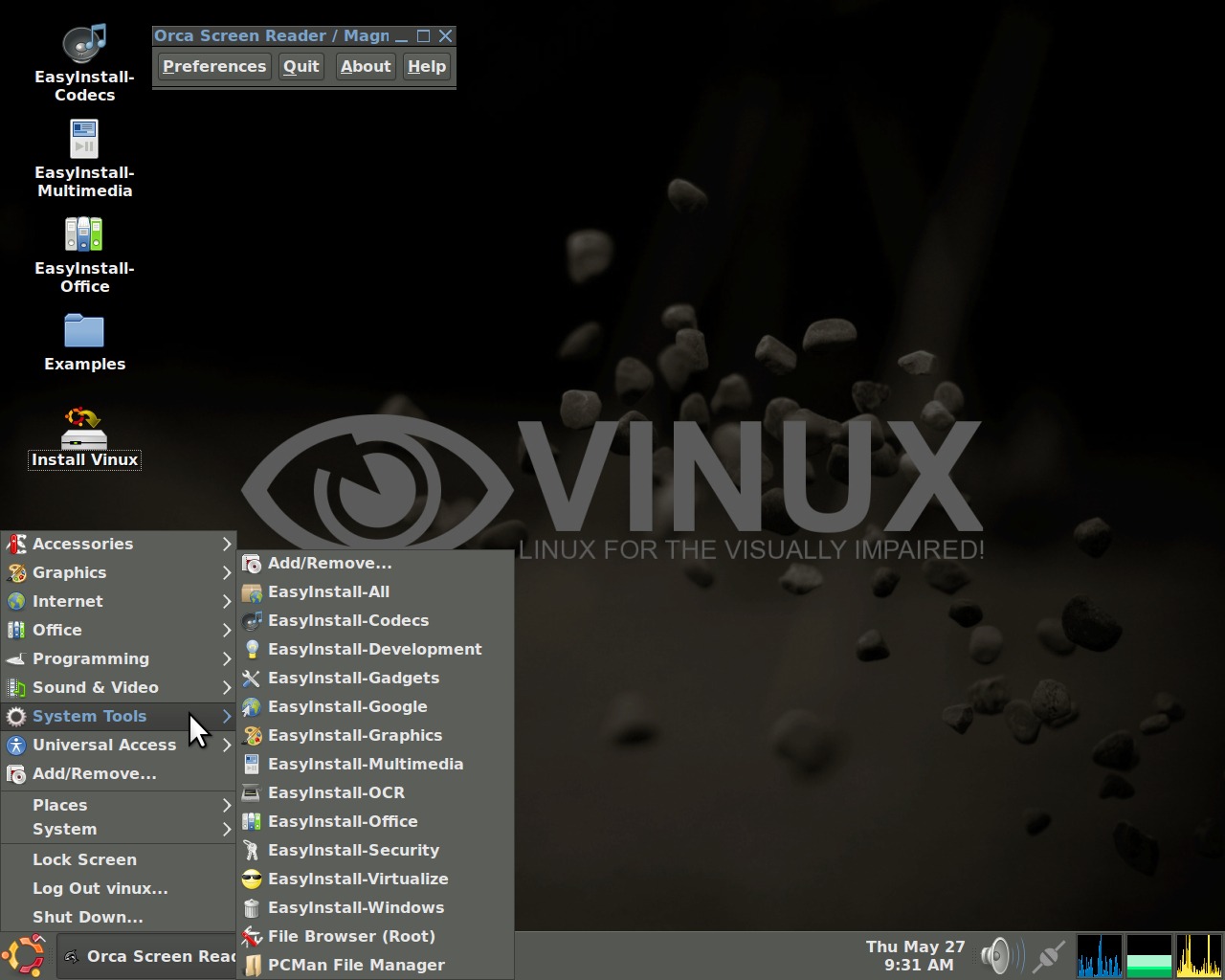
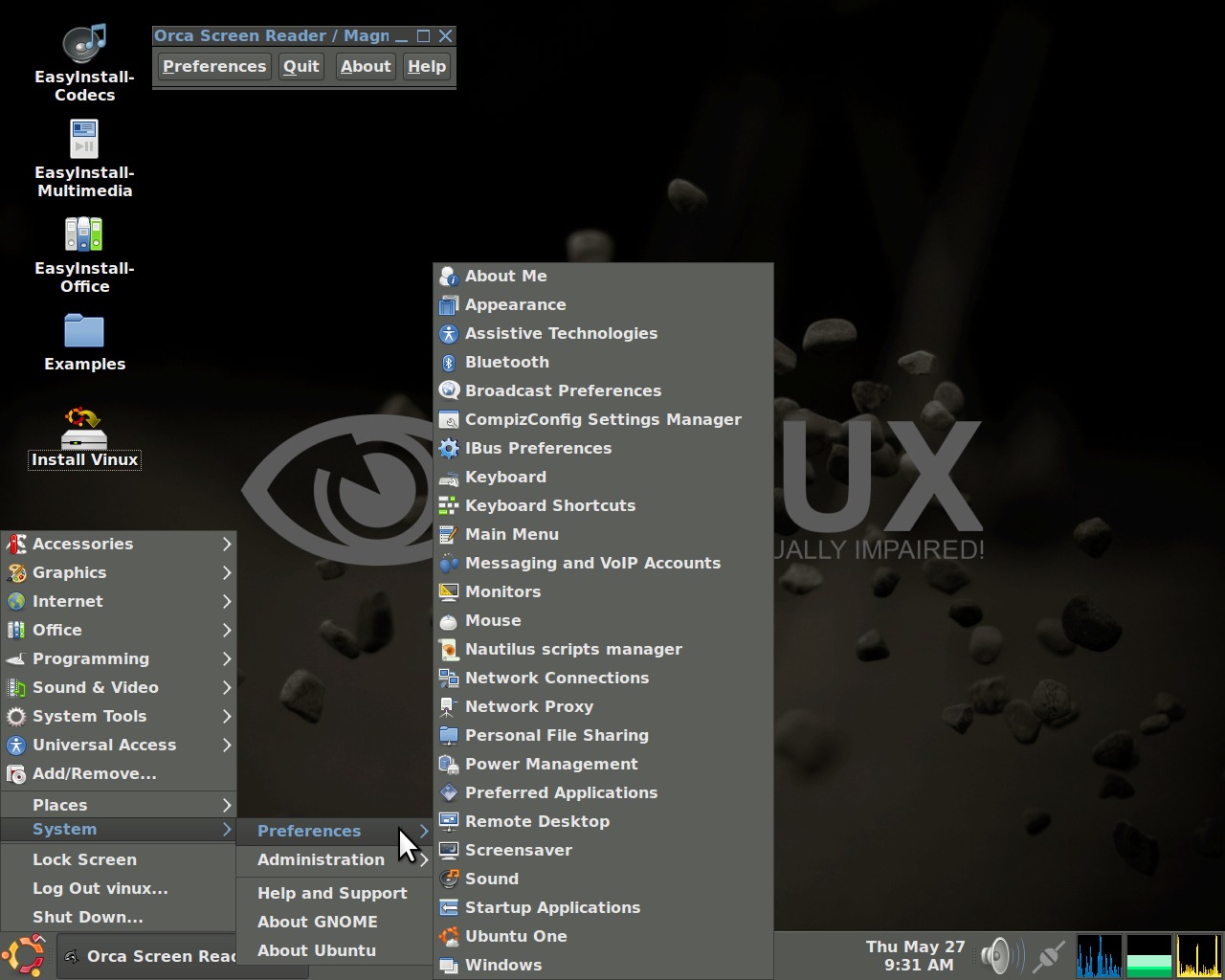
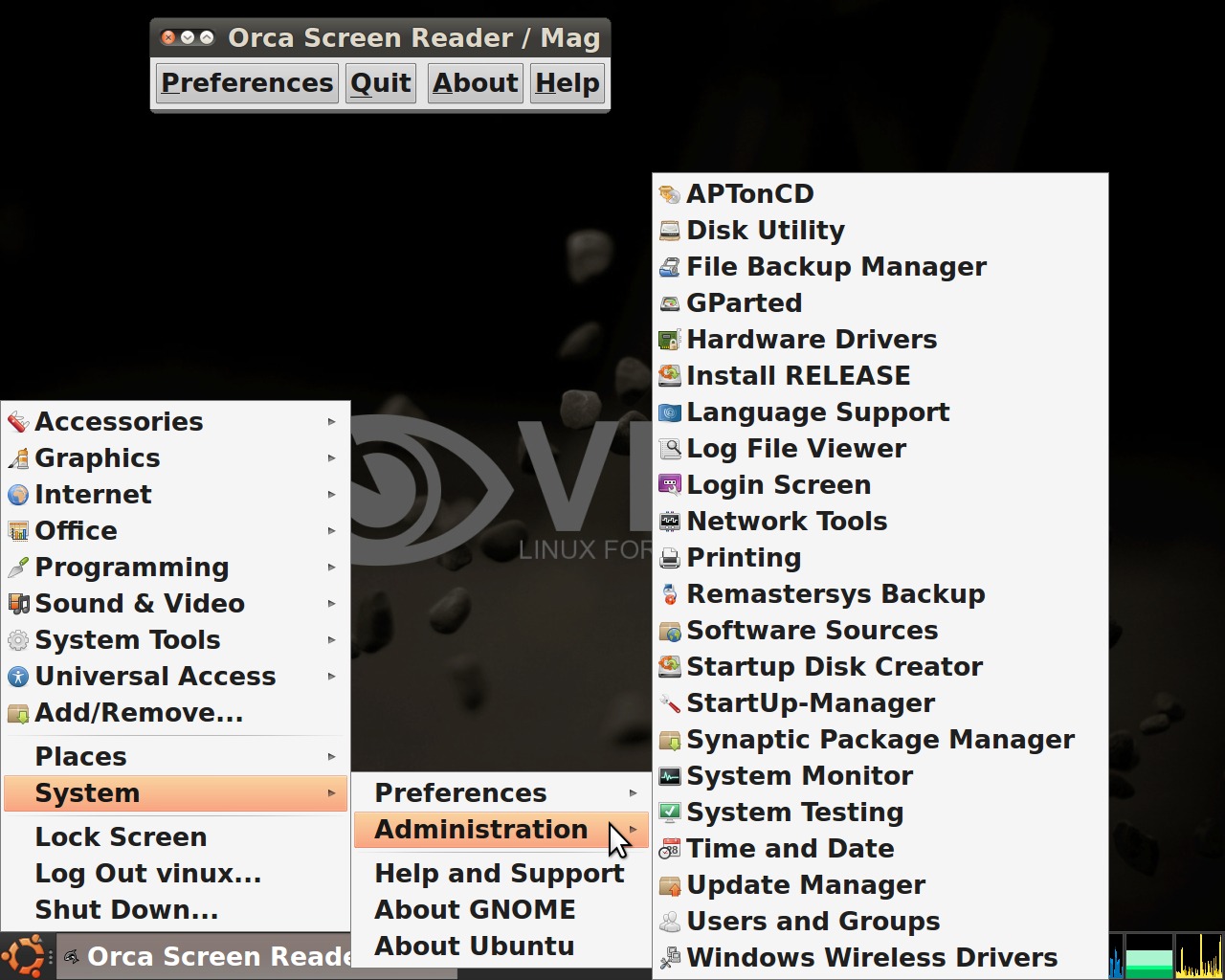
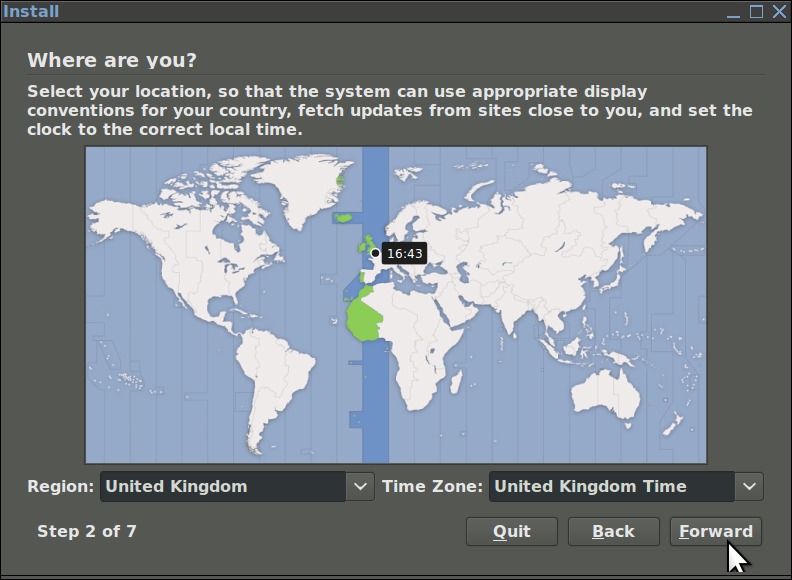
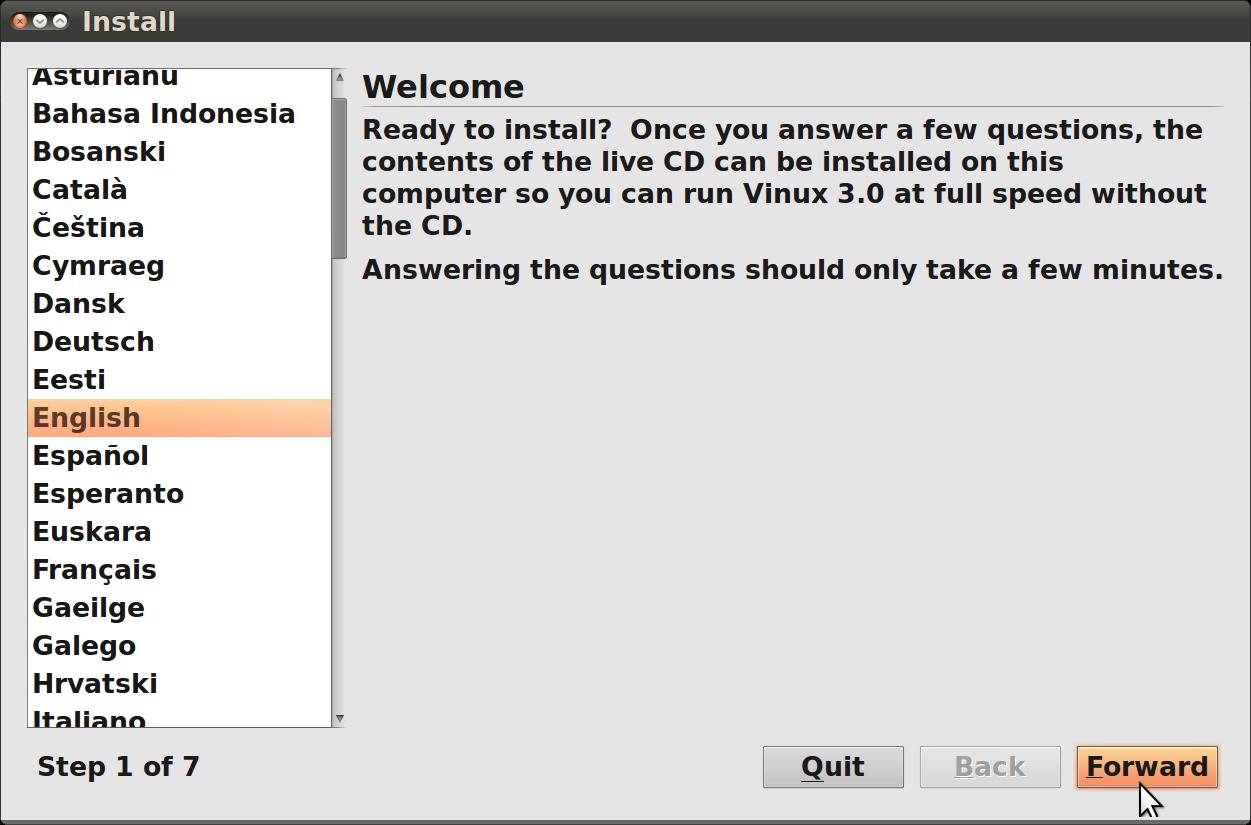
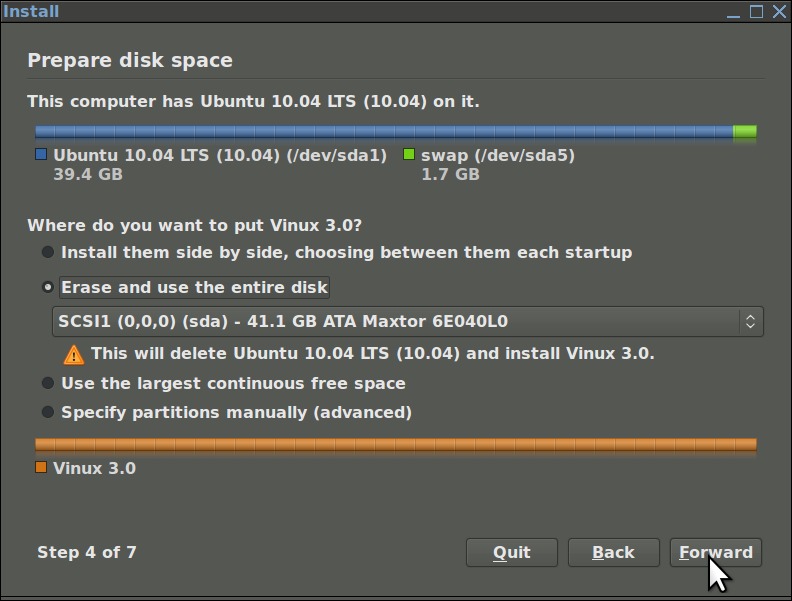
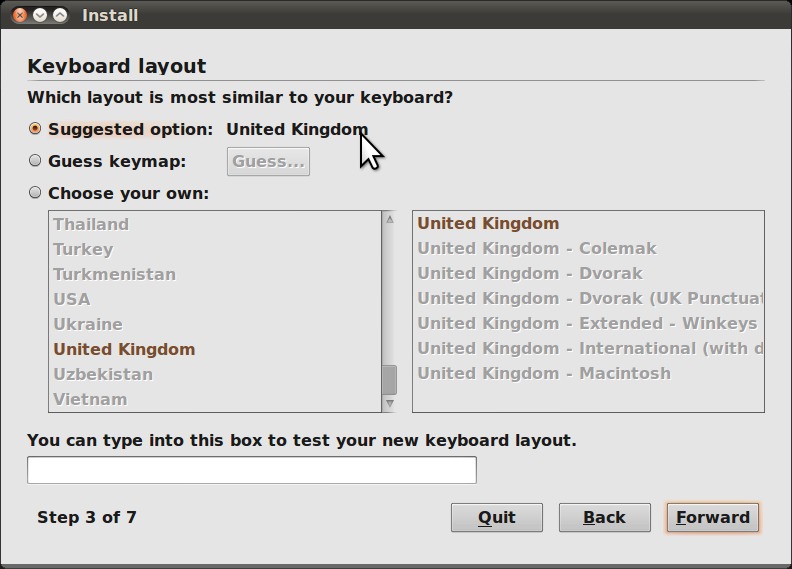
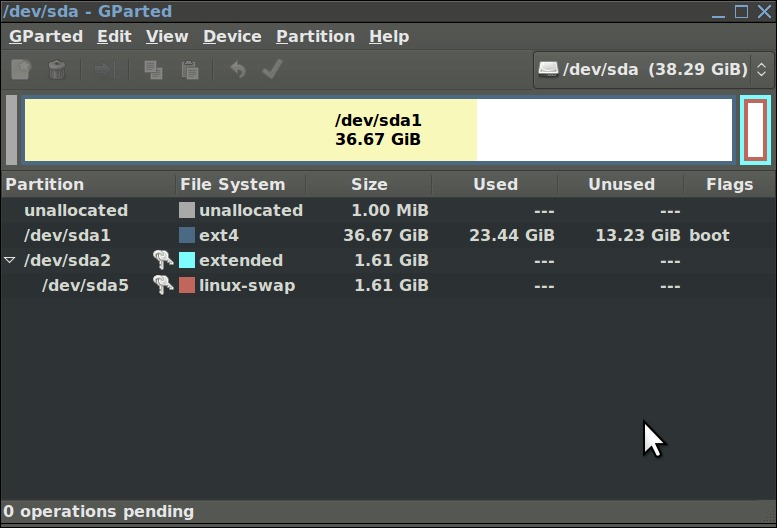
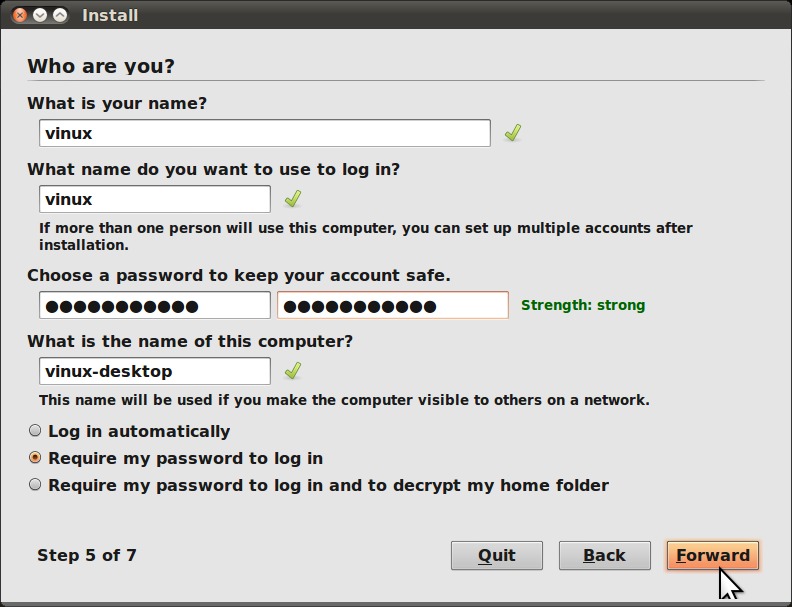
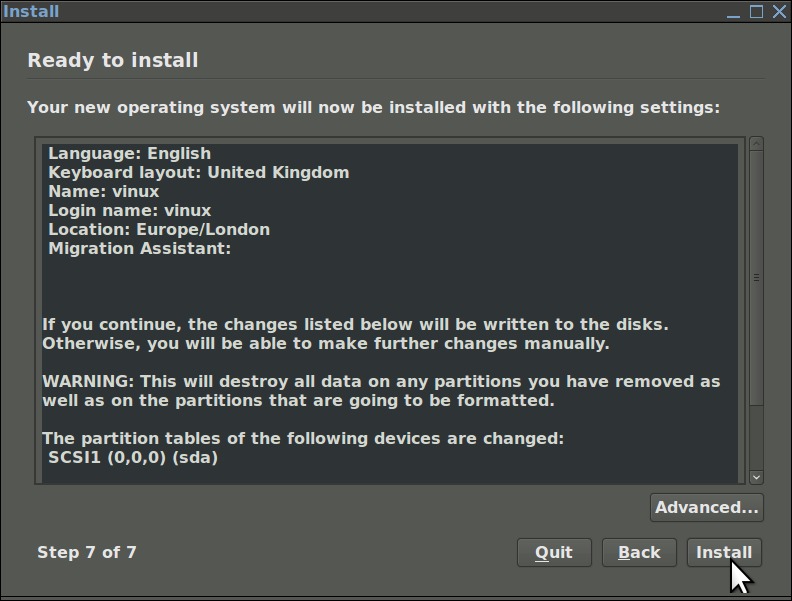
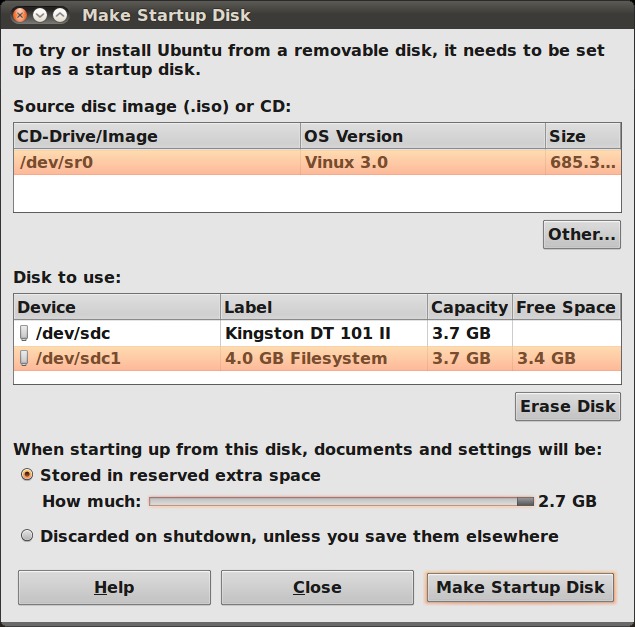
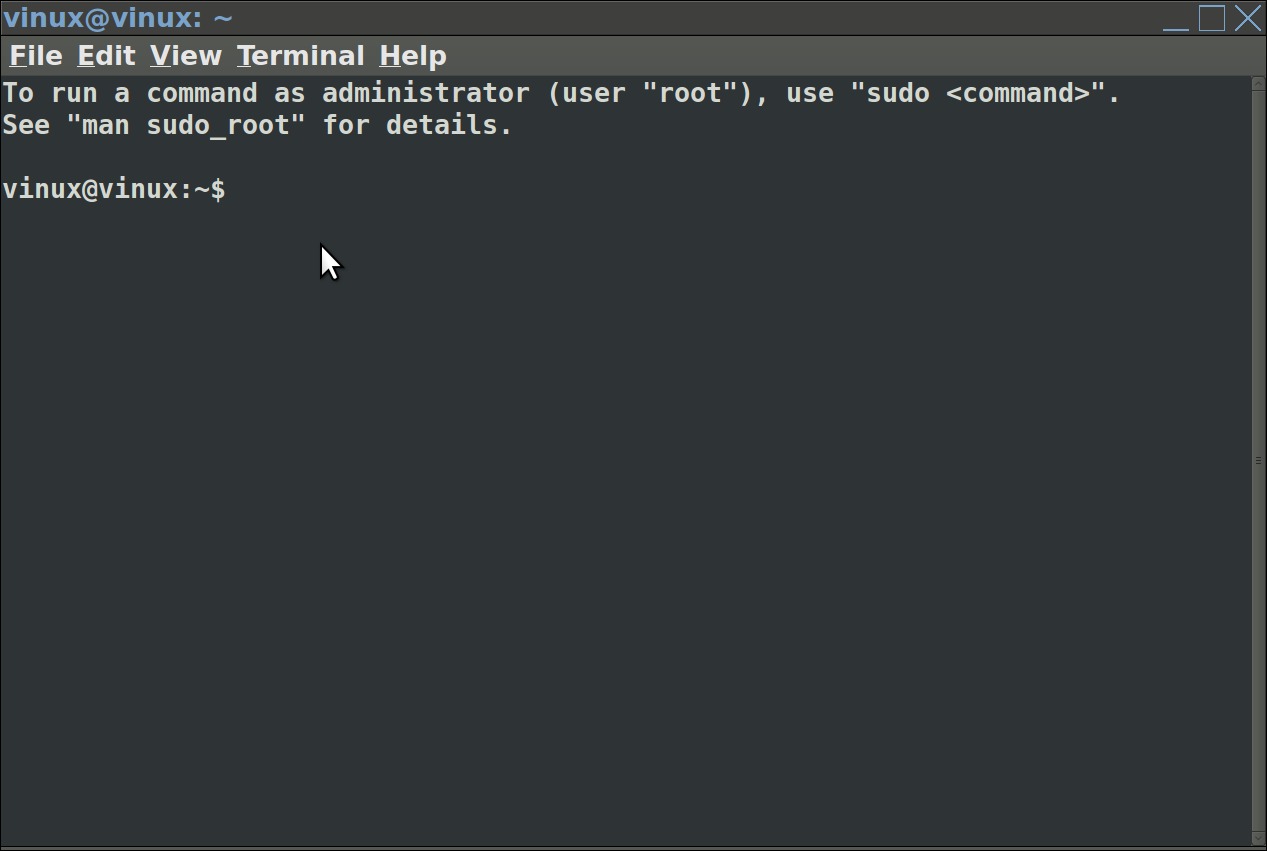
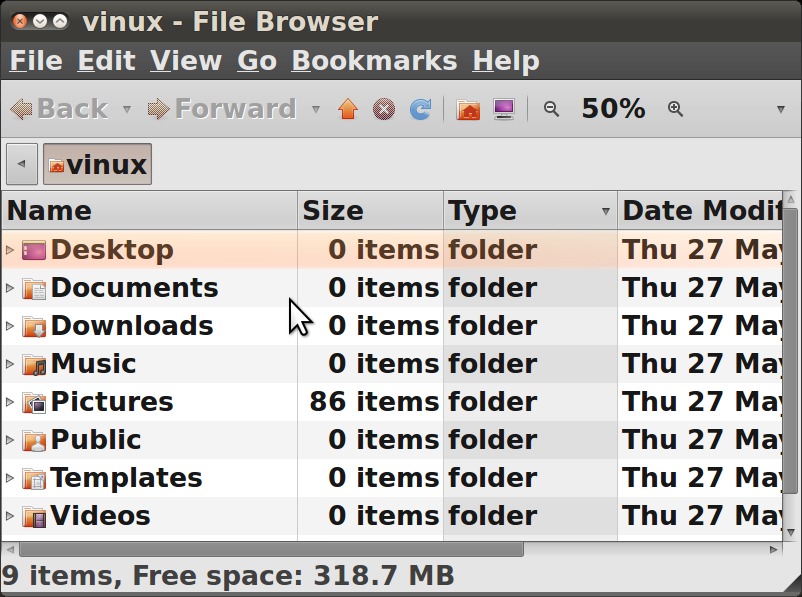
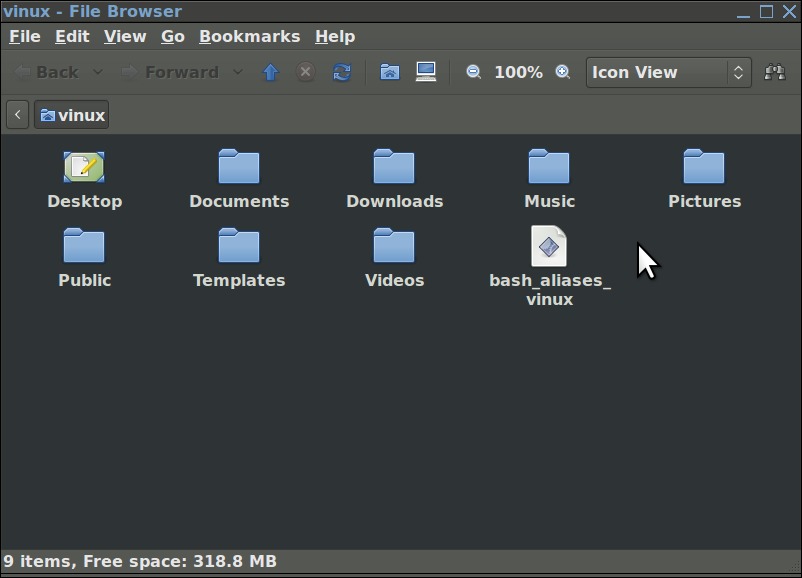
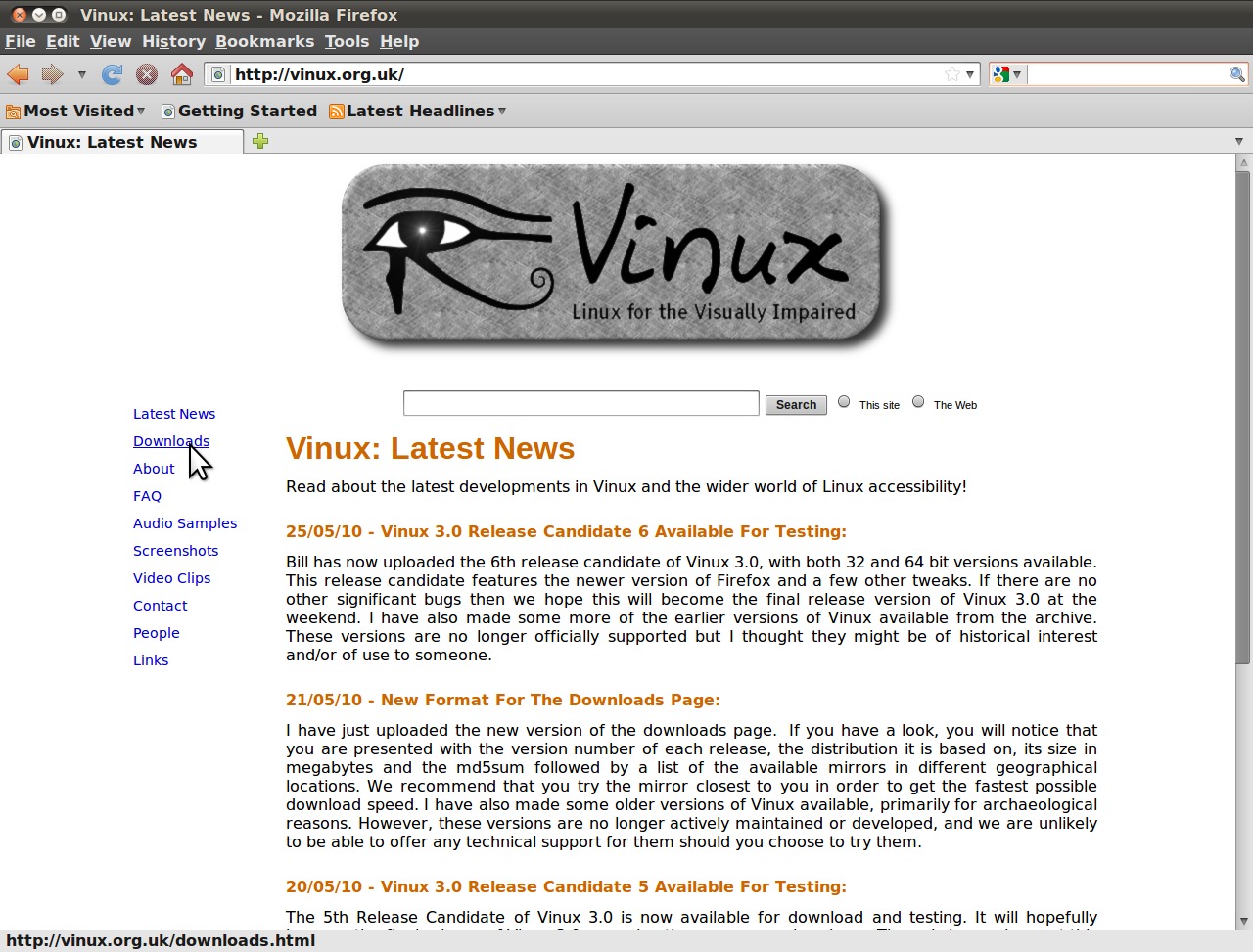
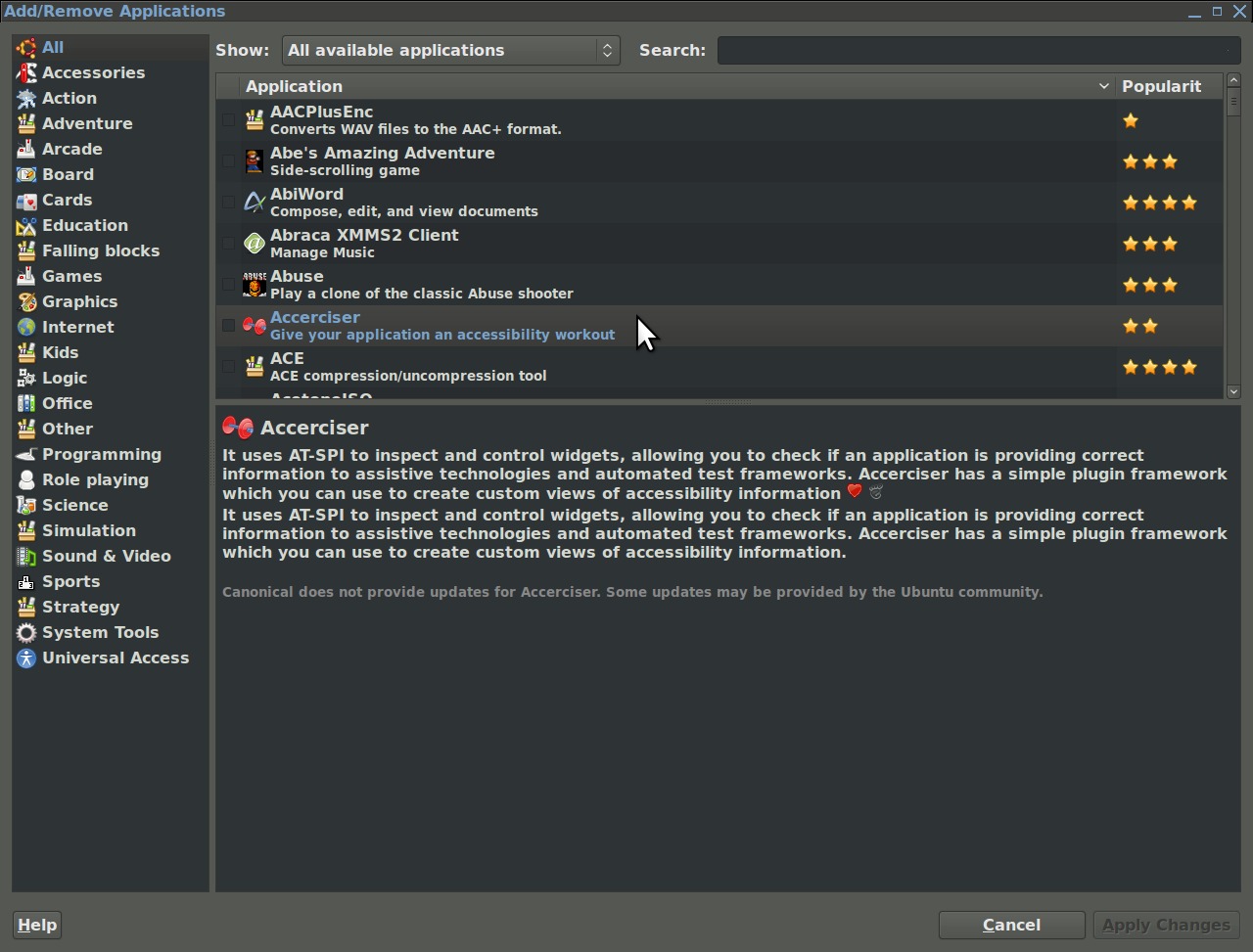
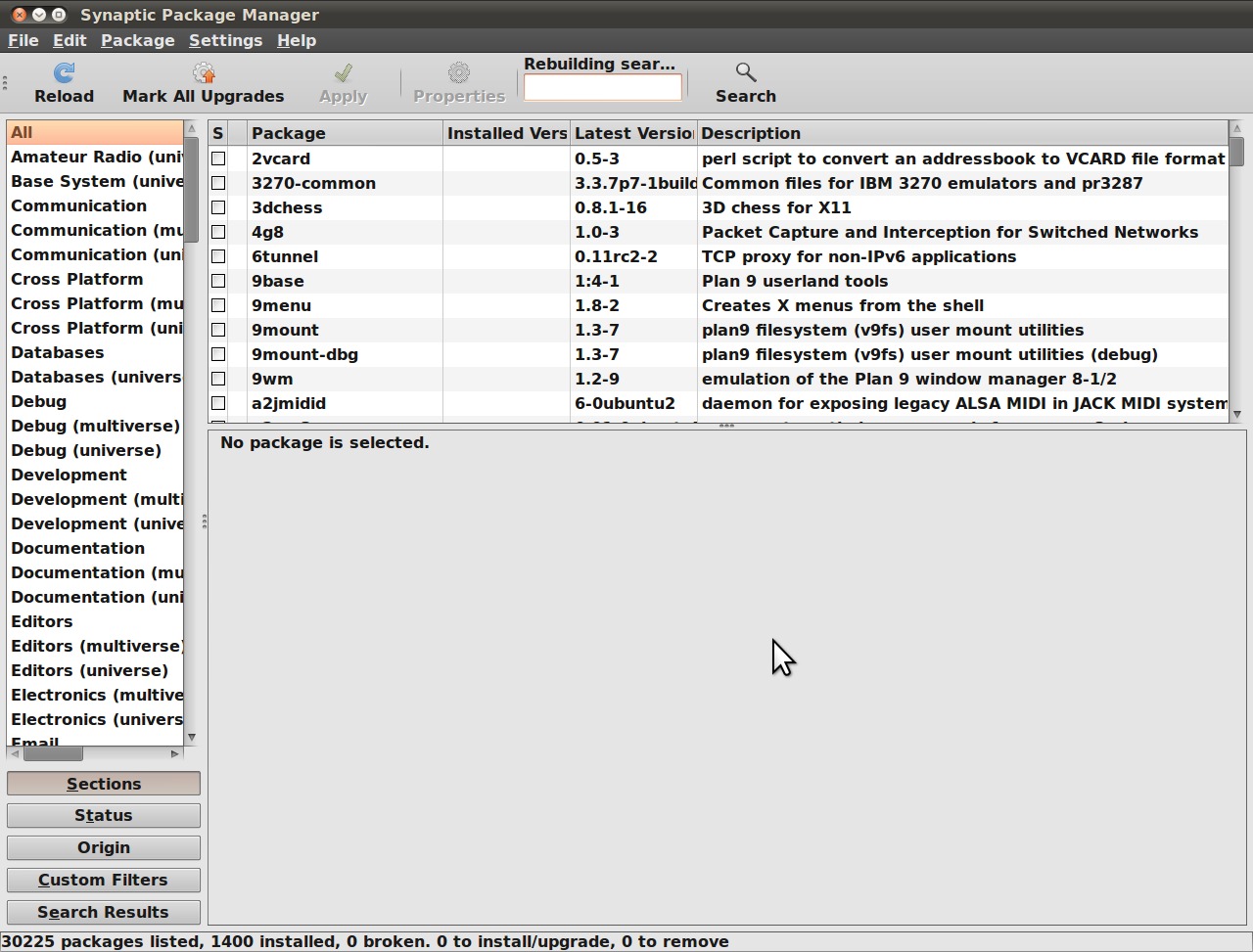

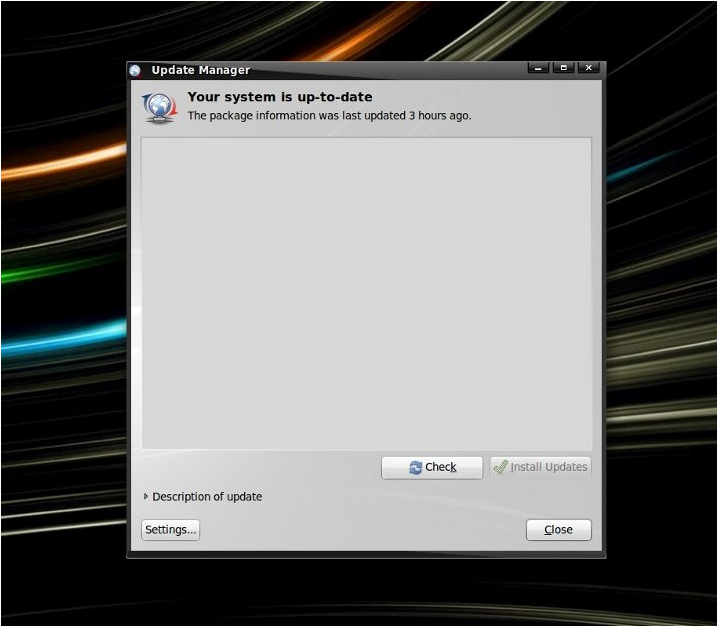
Comments not found